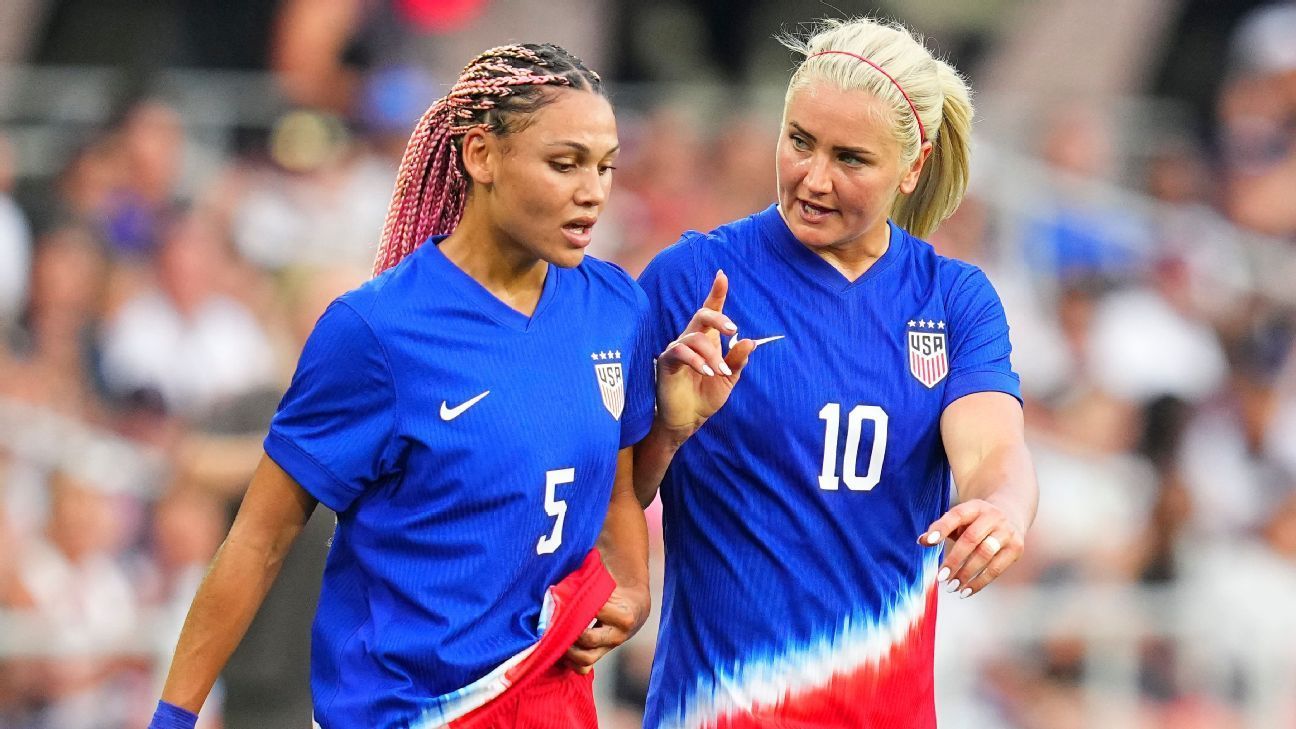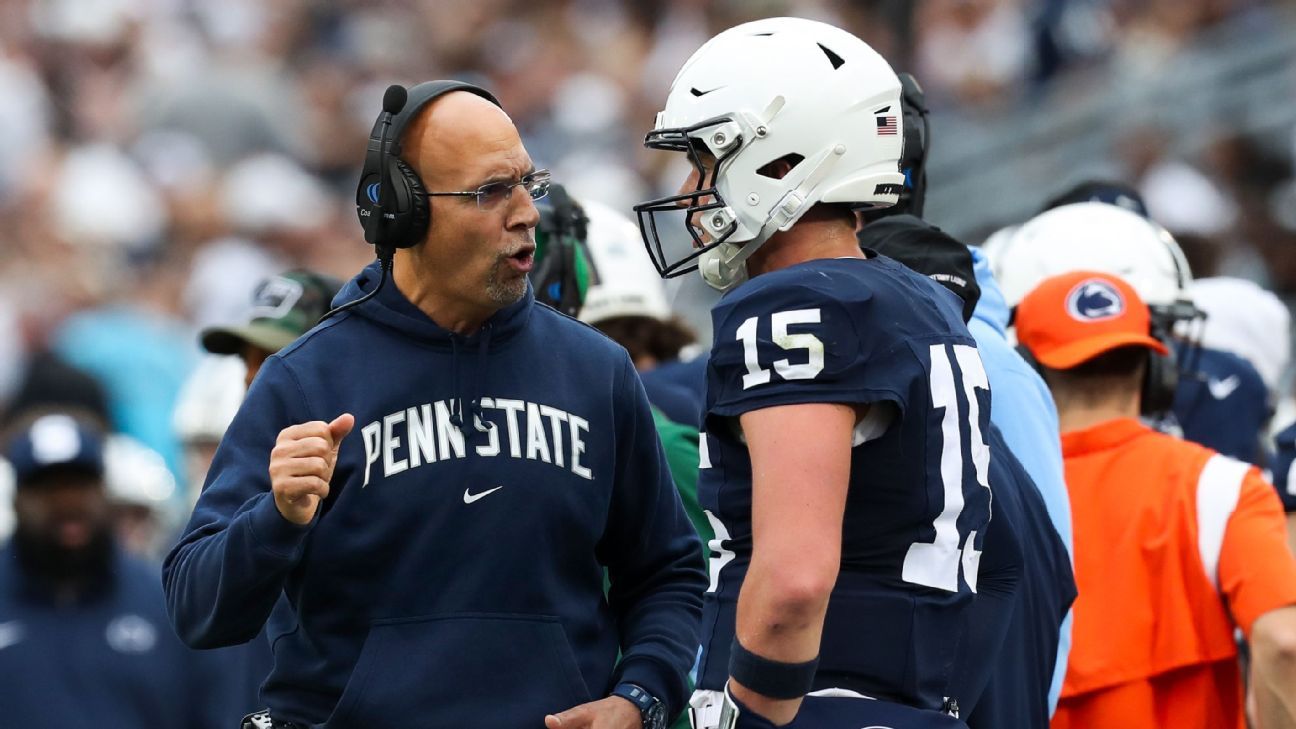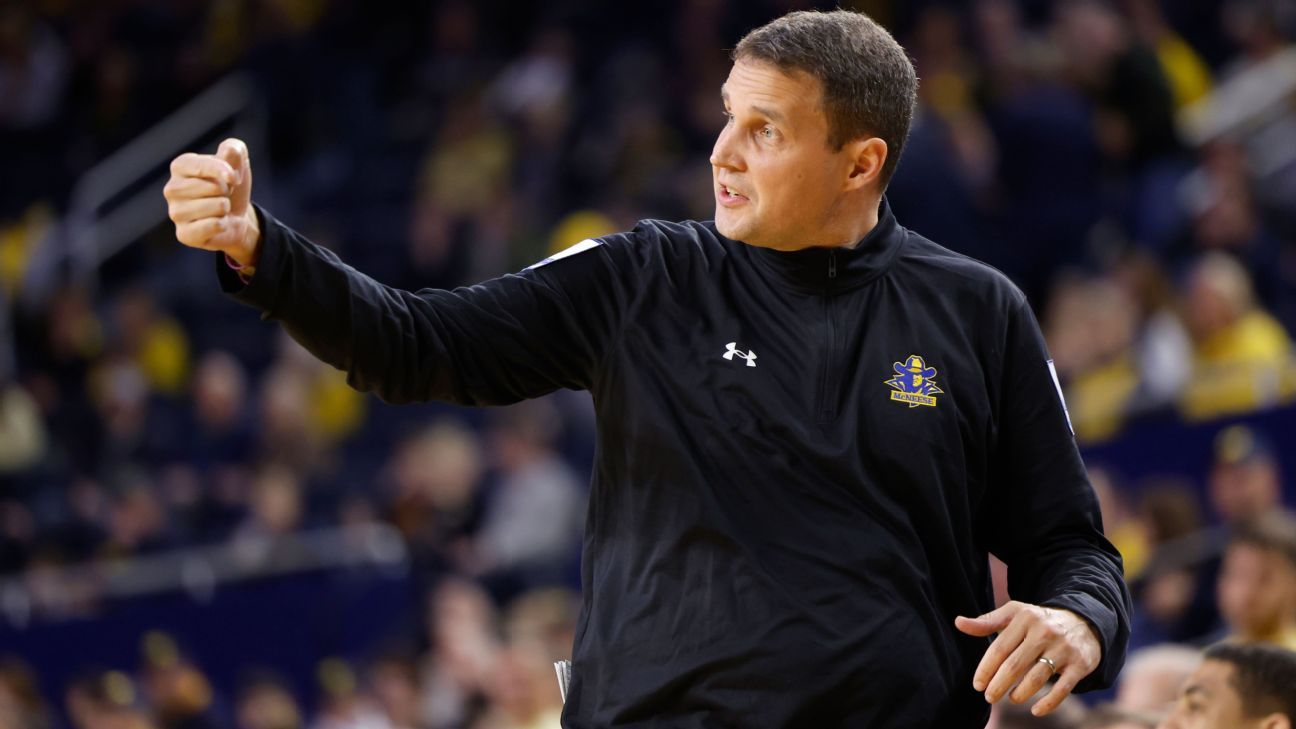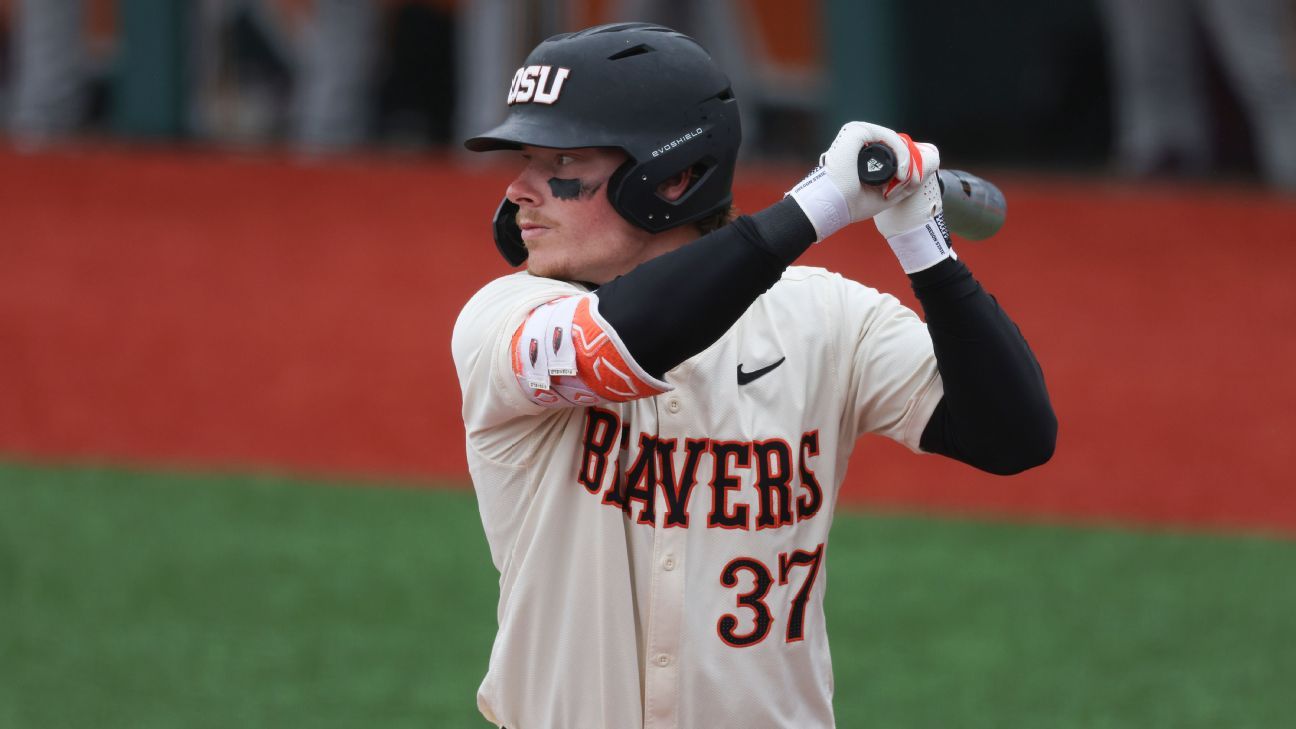U.S. women's national team coach Emma Hayes said she wanted better decision-making and execution in front of goal against Costa Rica in the Americans' final game before heading to the 2024 Olympics.
Instead, they earned a scoreless draw in which the U.S. women's national team took 26 shots and had 80% of the possession against a Ticas a team that played in an ultra-low block – a 4-2-3-1 “Christmas tree,” Hayes noted after the match – that clogged the channels and demanded from the Americans a precision that never came.
“Listen, if you play a percentage game or the law of averages, we're creating more and more high-quality chances and we're getting numbers in key areas, we're getting touches in key areas,” Hayes said after reading out an Opta statistic about his side's 67 touches in Costa Rica's box without scoring.
“The last part is the hardest. And I'm very patient, because I've coached teams that have to break blocks, and that's the hardest thing for a coach to do. If we hadn't created situations tonight, yeah, I might say something different, but I really love the team's intention. We're moving forward with that.”
Despite the statistical dominance, the U.S. women's national team produced fewer expected goals against Costa Rica (1.82, according to TruMedia) than it did in Saturday's 1-0 win over Mexico (1.94), the “last game” Hayes was referring to.
Tuesday’s game was played in sweltering heat — the heat index at kickoff was 106 degrees Fahrenheit — and was a farewell game, which can often produce atypical performances from teams. Still, the lack of a final product from the U.S. women’s team over the final 180 minutes is a concern not in a vacuum, but because it’s a reminder of the troubles of yesteryear.
The Americans struggled to connect before last year’s FIFA Women’s World Cup, and the problems foreshadowed in the buildup to that tournament manifested themselves when the U.S. was eliminated in the round of 16, its worst finish at a major tournament. That was a different team, with a different coach (and Hayes’ focus is long-term development), but the question of when things will click in front of goal remains fair and pressing a week before the Olympics.
There is plenty of individual talent in the squad – an undeniable truth about the 2023 World Cup squad too – and there have been moments of magic from the collective group.
A late-game combination of Trinity Rodman, Mallory Swanson and Sophia Smith moments after the trio entered the field in the June 4 win over South Korea serves as proof of that. All three players remain in MVP contention with their National Women's Soccer League clubs.
For the U.S. women's team, combination play remains a work in progress, not just among the three players up front, but for the collective. The U.S. women's best moments in Saturday's 1-0 win over Mexico came in transition. Developing that spirit will take longer than the four games the U.S. women's team has had under Hayes leading up to the Olympics.
“Yes, we need to be more clinical, I don't need to state the obvious,” Hayes said. “But I think when you've had maybe half a dozen training sessions in total since I've been a coach, I think it's a good result so far.”
Midfielder Rose Lavelle was a late scratch from the lineup after Tuesday's warmups due to what U.S. Soccer called “leg stiffness.” Lavelle's creativity in tight spaces was sorely missed against the opponent's low block, a statement that applies to many games in recent years. Lavelle's rise with the U.S. women's national team in 2017 coincided with the U.S. women's national team's inability to solve the low blocks at the 2016 Olympics.
Korbin Albert replaced Lavelle and played in an attacking midfield role alongside Lindsey Horan, and the United States tried but never managed to break through.
Rodman, Smith and Swanson all outran their defenders to get to the byline in the first 12 minutes, but found opposing bodies – or the hands of goalkeeper Noelia Bermúdez – in the path of their crosses or shots.
The most cohesive attacking moment of the first half and perhaps the match came in the 37th minute, when a series of USWNT passes down the left side ended with defensive midfielder Sam Coffey lofting a ball in at the far post for Horan, whose right foot made contact only to see the ball bounce gently off the near post.
It was a rare attack down the left side for the U.S. women’s team. Jenna Nighswonger, who has become the team’s starting left back, sat out Tuesday’s game as part of workload management ahead of the Olympics. No player has risen to greater prominence in the Hayes era than Nighswonger, whose first call-up came in the late November camp that followed Hayes’ appointment (but not Hayes’ official arrival) to the team. She had started eight of the U.S. women’s team’s 11 games this year through Tuesday. In her absence, the team changed course.
The Americans frequently build possession with Nighswonger moving to the left side in an almost winger-like role when she's on the field. Without her on Tuesday, however, the Americans leaned drastically to the right side, so much so that the average position of Swanson, who started the match on the left wing, was well inside Smith in the first 45 minutes.
He #USWNT He often favors a left-side formation with Nighswonger, but tonight they're overloading the right side so much (without her) that Swanson's average position is so far inside Smith's that they've inverted the position. It's not something completely new, but it's much more pronounced. photo.twitter.com/KNa414lf9H
– Jeff Kassouf (@JeffKassouf) July 17, 2024
“Everything is on track,” Hayes told right back Emily Fox early in the first half, as picked up by TNT's microphone. Hayes was talking about passing the ball to Rodman in the wide areas. Everything was on track, as were other opportunities, but the U.S. women's team's final product lagged behind again Tuesday.
Hayes switched to a 3-5-2 in the second half to try to find more space in attack, and the U.S. women's national team looked livelier but still couldn't find a breakthrough.
Caution and context are required in farewell matches, above all. There is a strange combination of experimentation and injury protection (in contrast to the potential anxiety players feel before a major tournament) that almost makes the result seem secondary.
All those unusual circumstances make the games seemingly more bland. There have been mediocre farewell matches before, including a scoreless draw with South Korea before the 2015 World Cup. The U.S. won that tournament, the first of two consecutive World Cups.
The landscape has changed dramatically since then, as Hayes has reminded the world regularly. The Americans are the underdogs at these Olympics, and a field of Zambia, Germany and Australia will challenge them every step of the way. There have been plenty of signs of progress under Hayes, who recounted the time she spent overseeing the team from afar in the spring alongside interim coach Twila Kilgore. Hayes pointed to the variety of challenges they’ve faced recently, from Mexico’s man-to-man marking to the different defensive blocks.
But, as Hayes said again Tuesday: “We have to be patient.”
Tuesday was another exercise in that challenge.
“For any football team, playing against low blocks is the hardest thing,” she said. “I think for us, the important thing is to keep in mind that if we keep creating chances in the right area, keep getting more players in the box, keep having as many touches as possible in that area, the goals will come. I'm sure of that.”












